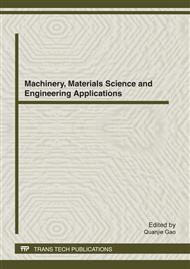p.82
p.90
p.96
p.101
p.106
p.112
p.117
p.123
p.128
The Modeling and Simulation of DFIM Based on Auto Disturbance Rejection Controller
Abstract:
In order to solve the coupling of rotor current of d axis and q axis, a new kind of control scheme for double-fed induction machine (DFIM) speed regulation system is proposed based on the theory of auto disturbance rejection controller (ADRC). The ADRC is composed of three parts: tracking-differentiator (TD), extended state observer (ESO) and nonlinear state feedback controller (NSFC). In the ADRC scheme, the coupling of rotor current is regarded as the inner disturbance of DFIM, inputting this disturbance to the input port of the speed regulation system by the feedforward compensation, the speed regulation system can change to the simple integral series connection system or simple linear system. This controller can realize decoupling of rotor current of d axis and q axis, obtaining a good speed tracking performance with small overshoot and fast setting time. Simulation results indicate the rationality and validity of the ADRC.
Info:
Periodical:
Pages:
106-111
Citation:
Online since:
April 2012
Authors:
Price:
Сopyright:
© 2012 Trans Tech Publications Ltd. All Rights Reserved
Share:
Citation:


